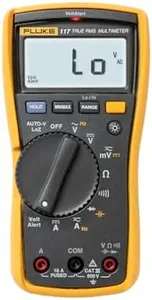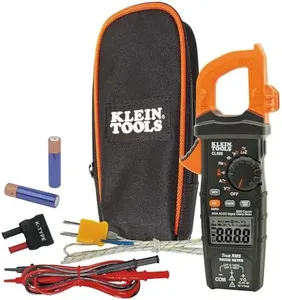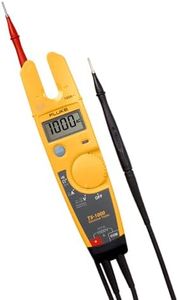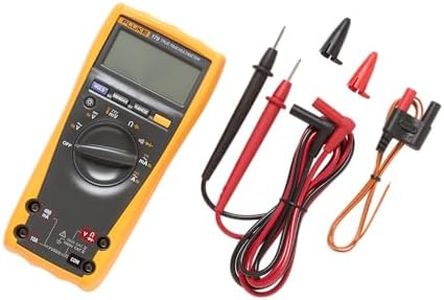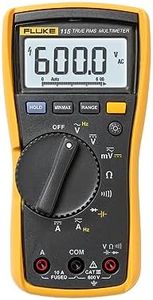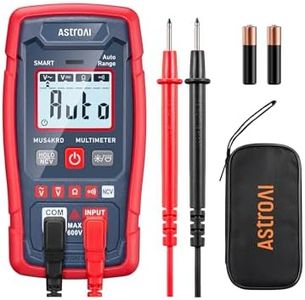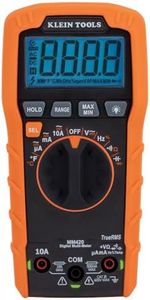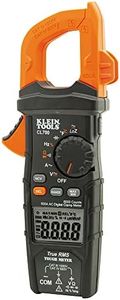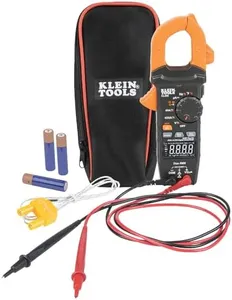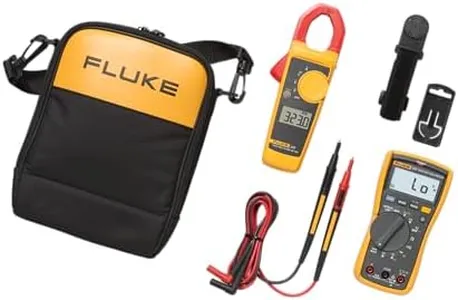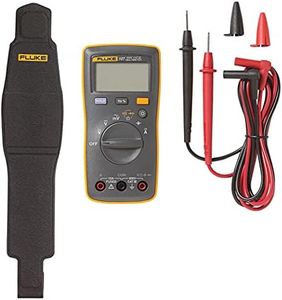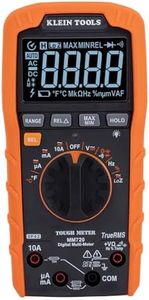We Use CookiesWe use cookies to enhance the security, performance,
functionality and for analytical and promotional activities. By continuing to browse this site you
are agreeing to our privacy policy
10 Best Multimeters
From leading brands and best sellers available on the web.Buying Guide for the Best Multimeters
When choosing a multimeter, it’s important to consider how and where you’ll be using it. Multimeters are essential tools for measuring electrical values like voltage, current, and resistance. They come in a range of complexities—from simple devices for basic troubleshooting to advanced models with lots of features for professionals. Think about the tasks you regularly perform: are you checking household batteries, working on your car, or taking on detailed electronics projects? Pinpoint your needs first, so you don’t end up paying for features you don’t use or lacking critical functions.Type (Analog vs. Digital)This refers to how the multimeter displays the readings. Analog multimeters have a needle and a printed scale, while digital ones show numbers on a screen. Analog meters are useful for detecting slow changes in readings but can be harder to read accurately, while digital models are easier to use, read, and tend to offer more features. If you value precision and ease, go digital. However, if you work with signals that change slowly and want to see trends, analog might help. Most people pick digital for convenience.
Measurement RangesThis spec indicates the highest and lowest voltages, currents, and resistance values the multimeter can measure. Some models require you to manually set the range; others do it automatically (auto-ranging). Wider ranges are useful if you work with a variety of devices, from small electronic circuits to power outlets. If you only need to test household batteries or simple electronics, lower ranges work fine. For broader applications, higher ranges and auto-ranging make use easier.
AccuracyAccuracy tells you how close the measurement will be to the true value. It’s usually expressed as a percentage (like ±1%). Higher accuracy is important for precise electronics work but may not matter as much for simple checks like battery voltage or continuity. If you need highly reliable measurements for repairs or experiments, aim for better accuracy. For everyday troubleshooting, standard accuracy is usually sufficient.
Input Protection and Safety RatingsGood multimeters include protection to prevent damage to you or the device if you measure something too high or connect it incorrectly. Safety ratings like CAT II, CAT III, or CAT IV indicate the environments where the meter can safely be used, such as residential circuits or industrial setups. If you work with high-power circuits, look for higher safety ratings. For basic home electronics, a standard rating is usually enough.
Display FeaturesThe display can vary in size, clarity, and backlighting. Some screens show more digits (counts) for extra precision or can hold the reading for you (data hold function). If you often work in dark spaces or need the clearest possible reading, look for models with a bigger, backlit display. For casual use in good lighting, a basic display will work.
Additional FunctionsBeyond the basics, some multimeters offer extra functions like measuring temperature, frequency, capacitance, continuity (makes a sound if there’s a path), or even test diodes and transistors. Only focus on added functions if you know you’ll use them. Excess features can complicate use if you just need simple measurements. Think about your typical tasks: for electronics repair, extra options may help. For household tasks, the basics suffice.
Build Quality and DesignDurability, case quality, ease of grip, and the presence of a stand or probe holders can affect how pleasant and safe it is to use. If you expect to use your meter frequently or in tough environments, pick a sturdy model. Occasional use around the home puts less demand on the build, so a lighter or more compact design may be handier.
